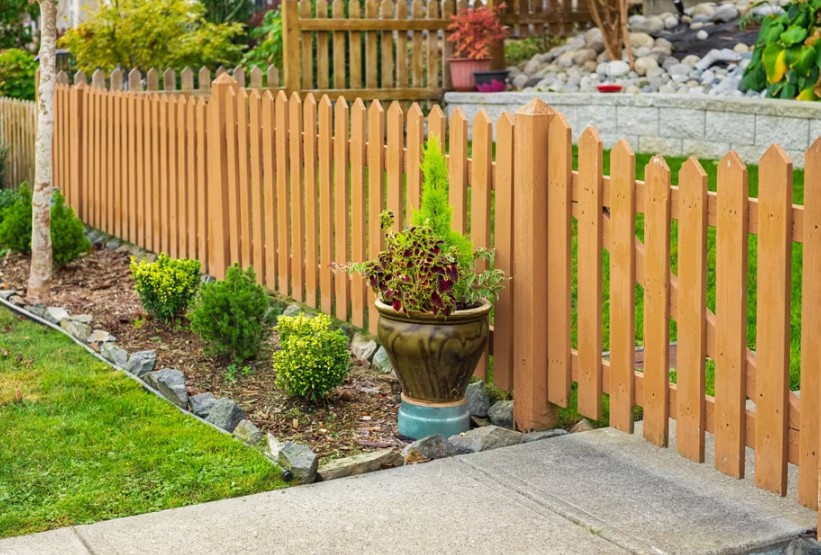
The Ultimate Guide to Choosing and Maintaining a Wood Fence
A wood fence is a timeless and versatile option for homeowners looking to enhance their property’s privacy, security, and curb appeal. Whether you’re considering installing a new fence or maintaining an existing one, understanding the benefits, types, and care tips for wood fences is essential. In this comprehensive guide, we’ll explore everything you need to know about wood fences, from material choices to installation and maintenance.
Why Choose a Wood Fence?
A wood fence offers several advantages that make it a popular choice among homeowners:
- Natural Aesthetic Appeal– Wood provides a warm, classic look that complements various architectural styles.
- Customizable Design– You can stain, paint, or leave the wood in its natural state for a personalized touch.
- Durability– With proper maintenance, a wood fence can last for decades.
- Privacy & Security– Solid wood panels create an effective barrier against intruders and nosy neighbors.
- Eco-Friendly Option– Wood is a renewable resource, making it an environmentally friendly choice.
Types of Wood Fences
When selecting a wood fence, you’ll encounter different styles and wood types. Here are the most common options:
- Picket Fence
A classic choice for front yards, picket fences feature evenly spaced vertical boards with pointed or rounded tops. They offer a charming, decorative look rather than full privacy.
- Privacy Fence
Designed to block visibility, privacy fences use tall, tightly spaced panels (often 6-8 feet high). Popular styles include board-on-board and stockade fences.
- Split Rail Fence
Common in rural areas, split rail fences consist of horizontal wooden rails fitted into vertical posts. They provide a rustic, open look ideal for large properties.
- Lattice Fence
Lattice fences feature crisscrossed wood strips, offering partial privacy while allowing light and airflow. They’re often used as garden or deck accents.
- Shadowbox Fence
This style alternates fence panels on either side of the rails, creating a semi-private yet visually appealing design that allows some airflow.
Best Wood Types for Fencing
The longevity and appearance of your wood fence depend on the type of wood you choose. Here are the most common options:
- Cedar– Naturally resistant to rot, insects, and warping. It has a beautiful reddish-brown hue that weathers to a silvery gray.
- Redwood– Durable and insect-resistant, but more expensive. It offers a rich, natural color.
- Pressure-Treated Pine– Affordable and treated to resist decay and pests. Requires staining or sealing for longevity.
- Spruce or Fir– Budget-friendly but less durable. Best for dry climates and requires regular maintenance.
Installing a Wood Fence: Key Steps
Proper installation ensures your wood fence stands strong for years. Follow these essential steps:
- Plan & Measure
- Check local zoning laws and HOA regulations.
- Mark property lines and obtain necessary permits.
- Measure the perimeter to determine materials needed.
- Gather Materials & Tools
You’ll need:
- Fence panels or lumber
- Posts, rails, and fasteners
- Concrete (for setting posts)
- Level, post-hole digger, and saw
- Set the Posts
- Dig holes (about 1/3 the post’s height).
- Place posts in concrete and ensure they’re level.
- Allow concrete to cure (24-48 hours).
- Attach Rails & Panels
- Install horizontal rails between posts.
- Secure fence panels or vertical pickets.
- Ensure even spacing and alignment.
- Apply Finishing Touches
- Sand rough edges.
- Stain, paint, or seal the wood for protection.
Maintaining Your Wood Fence
To extend the life of your wood fence, follow these maintenance tips:
- Regular Cleaning– Use a mild detergent and water to remove dirt and mildew.
- Staining/Sealing– Apply a protective sealant every 2-3 years to prevent moisture damage.
- Inspecting for Damage– Check for loose boards, rot, or insect infestations and repair promptly.
- Trimming Vegetation– Keep plants and vines away to prevent moisture retention and wood decay.
Conclusion
A wood fence is an excellent investment for enhancing privacy, security, and aesthetic appeal. By selecting the right type of wood, following proper installation techniques, and maintaining it regularly, your fence will remain sturdy and beautiful for years to come. Whether you prefer the classic charm of a picket fence or the solid privacy of a board-on-board design, a wood fence offers endless possibilities to suit your home’s needs.
